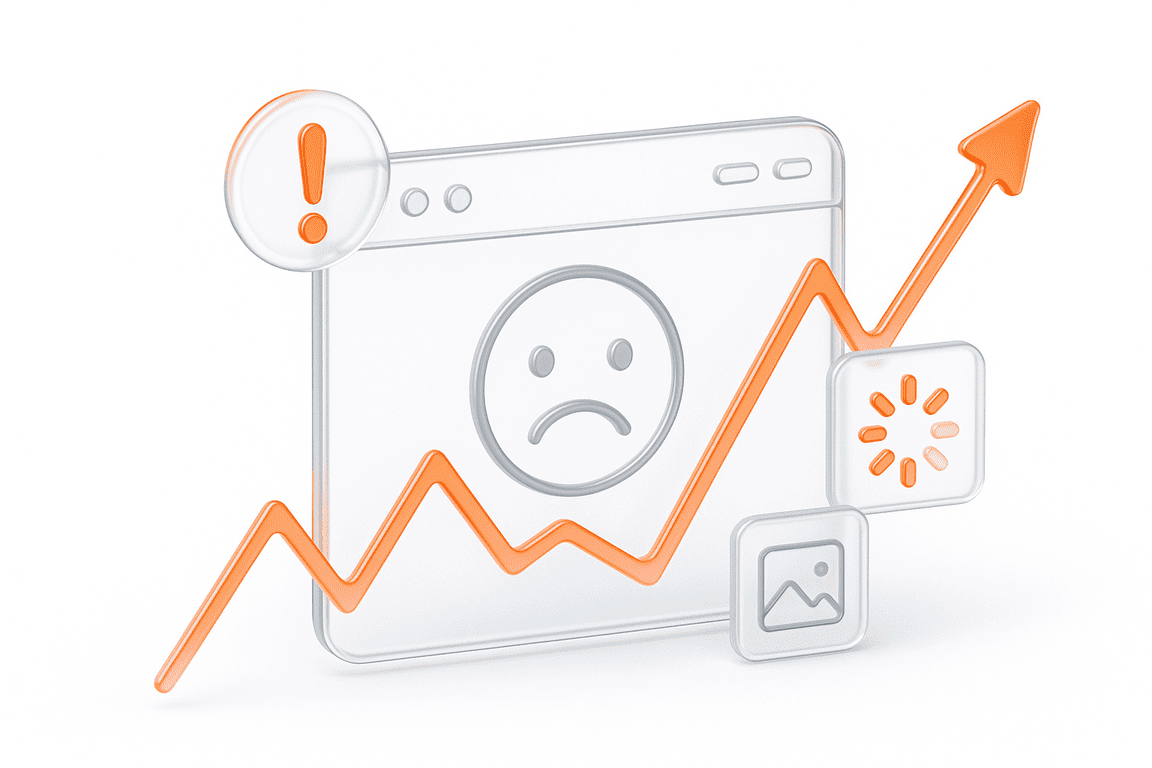Cloud software has transformed how businesses operate, but it also raises new challenges. How do you ensure a subscription-based product works reliably for every user, at every moment? SaaS testing provides that assurance by validating performance, security, and overall stability before issues reach production. This guide explains what is SaaS testing, why it matters, and how engineers conduct testing SaaS applications in real-world environments. You’ll learn the main testing methods, the standard methodology, the biggest challenges, and the best practices that keep modern SaaS application testing effective.
What is SaaS Testing?
SaaS testing is the process of validating software delivered through a cloud-hosted, subscription-based model. Unlike traditional applications installed on a customer’s own servers, SaaS platforms must support multiple tenants on shared infrastructure, deliver updates continuously, and remain accessible worldwide. That changes the testing scope: you’re not just checking if a feature works, but whether the entire service holds up under constant use, scale, and integration pressure.
From an engineering standpoint, SaaS testing spans three layers:
The purpose goes beyond functional correctness. SaaS application testing evaluates latency across regions, resilience during failover, and compliance with security standards like SOC 2 or GDPR. In practice, testing SaaS applications means replicating real-world conditions: sudden user spikes, API throttling, network interruptions, or parallel integrations with external services.
SaaS Testing Methods
Performance Testing
Performance testing in SaaS software testing validates whether the platform can meet agreed service levels across tenants and regions. Engineers measure latency percentiles (p95/p99), throughput in requests per second, and error budgets. For example, APIs may target p95 ≤ 300 ms and error rates below 0.5%.
Capacity planning often uses Little’s Law:
Active Users (N) ≈ Throughput (λ) × Response Time (W)
So, if your SaaS application must handle 600 RPS with 0.25 s response times, expect ~150 active concurrent users. This formula ensures load models reflect real usage.A strong SaaS performance testing program also checks noisy-neighbor effects in multi-tenant systems, confirming that one tenant’s peak load doesn’t degrade another’s experience. Autoscaling should add capacity within ~60 s, and observability dashboards must report per-tenant metrics, not just global ones.
Security Testing
In testing SaaS applications, security is inseparable from reliability. Tests validate identity management (OAuth2/OIDC, MFA), enforce data isolation between tenants, and confirm encryption practices (TLS 1.2+ in transit, AES-256 at rest). Engineers run penetration tests against APIs and review role-based access controls for privilege escalation risks.
Universally, SaaS products must align with compliance frameworks (SOC 2, GDPR, HIPAA). A good practice is to automate evidence collection during test cycles, so audits aren’t a last-minute scramble. Backup and restore testing is equally critical — a 15-minute recovery point objective (RPO) and a 1-hour recovery time objective (RTO) are common baselines.
Load Testing
Load testing confirms the platform sustains concurrency without degradation. Typical profiles include:
Example: to simulate 500 RPS with average response time of 0.2 s and 0.3 s user think time →
W = 0.2 + 0.3 = 0.5 s
N = 500 × 0.5 = 250 concurrent users
Pass criteria typically include ≤ 1% error rate, stable CPU < 80%, and no sustained GC pauses > 100 ms.
Integration Testing
SaaS platforms rarely operate in isolation. They depend on payment processors, storage providers, CRMs, or analytics APIs. Integration testing ensures those connections remain stable.
Best practices include contract testing (schema and versioning), sandbox validation under realistic rate limits, and resilience checks with timeouts, retries, and circuit breakers. For webhooks, engineers test signature validation, replay windows, and idempotent handlers. Universally, SLIs such as ≥ 99.5% success rate and ≤ 500 ms p95 latency per dependency help maintain consistent quality.
Unit Testing
Unit testing underpins SaaS application testing. It isolates core logic and runs quickly in CI pipelines. While exact coverage goals differ, ≥ 80% branch coverage on critical modules is common. Mutation testing helps measure test effectiveness, while property-based tests catch edge cases in serialization, date handling, or financial calculations.
The universal takeaway: unit tests should be deterministic, fast, and free of external dependencies — otherwise, they erode trust in the feedback loop.
SaaS Testing Methodology
Testing SaaS applications follows a repeatable cycle. Each stage contributes different insights, and skipping one weakens the entire process.
Planning
This stage defines the rules of success and ensures test conditions reflect production. Without precise planning, later results are unreliable.
Why this matters: These thresholds are not arbitrary; they align with human perception of responsiveness and accepted SRE practices. Concurrency modeling prevents unrealistic tests, and environment parity ensures test data translates to production behavior.
Test Design & Setup
This is where user journeys, datasets, and observability are defined.
Why this matters: Balanced tenant distribution prevents over-optimistic results. Large datasets expose indexing or cache weaknesses. Instrumentation with percentiles, not averages, reveals tail performance that real users notice most.
Execution
Execution applies the designed workloads in a strict order, moving from lightweight checks to heavy endurance tests.
Why this matters: The sequence reduces wasted effort by catching simple defects first. Concurrency formulas prevent guesswork and ensure load models match reality. Pass/fail rules give objective stop conditions, while rollback criteria prevent subjective debates under pressure.
Monitoring & Analysis
Monitoring turns raw test data into actionable insights. Without analysis, numbers stay meaningless.
Why this matters: Segmented metrics detect noisy-neighbor problems unique to SaaS. Regression comparisons flag performance drift early. Error budgets tie testing directly to operational reliability, preventing hidden technical debt.
Continuous Feedback
Feedback ensures testing isn’t a one-off event but a continuous safeguard in a CI/CD cycle.
Why this matters: Continuous feedback connects testing to engineering culture. Blocking releases protects customers from regressions. Adding tests after each fix builds resilience.
SaaS Testing Challenges
Even with a strong methodology, SaaS testing faces hurdles unique to the delivery model. Multi-tenancy, continuous updates, and global reach create conditions that make testing more complex than traditional software.
Accessibility
SaaS users access services from anywhere. Testing on only one device or network hides issues that appear in slower regions or on older hardware. Latency injections simulate real-world variance that breaks optimistic assumptions.
Data Security
Shared infrastructure makes breaches more damaging. Encryption standards are industry baselines; anything weaker fails compliance. Recovery metrics ensure customers don’t lose critical data during outages.
Multi-Tenancy
Tenants share infrastructure. Without explicit isolation, one heavy user can degrade service for thousands. Simulating worst-case noisy neighbors proves stability of the tenancy model.
Continuous Updates
Continuous delivery is both strength and risk. Without rigorous regression checks, a small schema change can cascade into global failures. Canarying minimizes blast radius when issues slip through.
Integration Complexity
SaaS relies on third-party systems. External APIs fail in unpredictable ways. Resilience testing ensures the platform degrades gracefully instead of collapsing when dependencies misbehave.
SaaS Testing Best Practices
Challenges in SaaS testing can’t be avoided, but they can be managed with disciplined practices. The following approaches make results more reliable and keep teams ahead of recurring issues.
Design for Realism
Small or synthetic datasets hide performance bottlenecks. Multi-tenant mixes reveal how load distribution impacts shared infrastructure. Network simulation ensures performance isn’t over-estimated in perfect lab conditions.
Embed Testing Into Delivery
Continuous integration enforces discipline. Problems are caught early, and production is never exposed to untested code. This cadence matches the rapid release cycles of SaaS software testing.
Prioritize Performance Early
Teams often test performance late. Embedding saas performance testing in early stages prevents surprises when scale increases. Comparing with previous runs detects drift even when SLOs are technically met.
Automate Security Validation
SaaS platforms operate under constant compliance pressure. Automation ensures checks don’t rely on manual steps and builds a library of compliance-ready artifacts.
Leverage Expert Services
Internal teams can’t replicate every failure mode. External services bring broader benchmarks, battle-tested tooling, and unbiased results, filling gaps that internal testing leaves uncovered.
Final Thought
What makes SaaS testing interesting is that it never really ends. You can hit every metric in one release and still find new problems the next week. That’s not a failure of the process — it’s the reality of running software that lives in constant change.
The value of SaaS application testing isn’t in proving perfection. It’s in showing how a system behaves under pressure, where it bends, and where it breaks. Those signals are what guide design choices, scaling strategies, and even product decisions.
SaaS testing gives you a clearer picture of the moving target you’re actually building.
Related insights in blog articles
How Website Performance Impacts E-Commerce Sales and Cart Abandonment

Every e-commerce store has mere milliseconds to make the right impression on shoppers. When prospects land on a product page, they assess every single metric, and e-commerce website performance and speed are the most critical ones. In most scenarios, impatient users will bounce instantly — at the slightest hint of latency caused by high loads […]
10 Signs Your Website Can’t Handle Traffic Spikes: Everything you need to know

Your campaign goes live, clicks start pouring in, and traffic shoots up fast. It’s the moment you’ve been waiting for, until everything slows down. Pages take ages to load, checkout freezes, and visitors disappear before they can buy. It’s a frustrating twist: the success of your marketing draws in more people than your website can […]
Why Averages Lie: Mathematical Methods for Load Testing

Relying on “average” metrics alone makes load testing surprisingly inaccurate. In this article, we’ll show how to avoid the usual traps and walk through practical techniques for mathematically modelling a workload profile, from analyzing variance and correlations to spotting Simpson’s paradox and validating the final model. When a company moves to a new system, the […]
DevDays Europe Conference 2026 – Advance Your Software Development Expertise

DevDays Europe is the ultimate software development conference that aims to bring together the brightest minds and innovators in the software development community. Join the conference for an immersive experience filled with transformative insights, collaborative opportunities, and the latest cutting-edge technology. The DevDays Europe 2024 will be happening both on-site and online, allowing everyone to join the event in their preferred format.
Be the first one to know
We’ll send you a monthly e-mail with all the useful insights that we will have found and analyzed
People love to read
Explore the most popular articles we’ve written so far
- Top 10 Load Testing Tools for 2025: The Deep Dive Sep 9, 2025
- Cloud-based Testing: Key Benefits, Features & Types Dec 5, 2024
- Benefits of Performance Testing for Businesses Sep 4, 2024
- Android vs iOS App Performance Testing: What’s the Difference? Dec 9, 2022
- How to Save Money on Performance Testing? Dec 5, 2022


